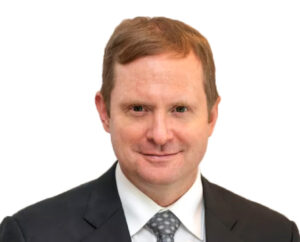Case details
Worker suffered severe injuries after pipe bundle fell on him
SUMMARY
$3000000
Amount
Mediated Settlement
Result type
Not present
Ruling
KEYWORDS
ankle, anxiety, back, brain, brain damage, brain injury, chest, cognition, concentration, concussion, depression, distal fibula, emotional distress, fracture, fusion, head, headaches, hearing, impairment, insomnia, knee, leg, lumbar, mental, neck, partial loss of, psychological, rib, sensory, speech, subarachnoid hemorrhage, transverse process, traumatic brain injury, vertebra, vertigo
FACTS
On Feb. 22, 2017, plaintiff Juan Cabrera, 55, a truck driver, delivered irrigation piping to Western AG & Turf Inc. at an empty field located at 8000 West Manning Ave., in Madera. Another company, Pacific Plastics Inc., had loaded the piping onto Cabrera’s trailer, and Western AG & Turf employee Ismael Gonzalezpaz was tasked with using a forklift to remove the piping from Cabrera’s trailer. When Cabrera arrived at the field, he exited his truck and attempted to detach the trailer from his vehicle, so that Gonzalezpaz could unload the piping. While Cabrera was detaching the trailer, Gonzalezpaz attempted to unload a bundle with the forklift, but the bundle, weighing approximately 1,200 pounds, fell onto the ground and landed on Cabrera. Cabrera claimed to his neck, back, brain, ribs and intestines, plus to an ankle, a hip, a knee and a foot. Cabrera sued Gonzalezpaz and Western AG & Turf. Cabrera alleged that Gonzalezpaz was negligent in the removal of the piping from the trailer and that Western AG & Turf was vicariously liable for Gonzalezpaz’s actions. Western AG & Turf and Gonzalezpaz filed cross-claims against Pacific Plastics Inc. and Cabrera’s employer, Domingo Barcenas, seeking indemnification. Western AG & Turf and Gonzalezpaz alleged that Pacific Plastics had negligently loaded the piping, causing it to fall. Pacific Plastics filed a cross-claim against Western AG & Turf and Gonzalezpaz, also seeking indemnification. Cabrera’s counsel ultimately amended the suit to include a claim against Pacific Plastics. Plaintiff’s counsel contended that Gonzalezpaz failed to warn or notify Cabrera that he was going to start unloading the piping from the trailer. Counsel also contended that when the forklift began to lift the piping from the truck, the forklift’s forks were at an upward angle, causing one of the other bundles to fall to the ground. Defense counsel asserted that Gonzalezpaz told Cabrera that he was going to start unloading the piping. Counsel also asserted that Cabrera was standing in an improper location prior to the accident., Cabrera was placed in an ambulance, and he was transported to Community Regional Medical Center, in Fresno. He was diagnosed with a burst fracture of his L4 vertebra with a retropulsed fragment and disruption of the right L3-4 facet joints. He also had an L5 anterior superior corner fracture, and fractures of the transverse processes of his L2, L3 and L4 vertebrae. Cabrera also sustained neck , consisting of a closed, nondisplaced, anterior chip fracture of his C6 vertebra and a comminuted fracture of the left C6 facet. His lower body included a right, anterior hip dislocation and a closed, displaced fracture of his left ankle. His left ankle fracture was a bimalleolar fracture, which is a fracture of each of an ankle’s malleoli, which are the bony protuberances. He also sustained a fracture of the left distal fibula and a closed, displaced unicondylar fracture of his left leg’s tibial plateau, which is a lower component of the knee. In addition, Cabrera sustained head , a small intestine contusion, closed rib fractures, bilateral first costochondral junction fractures, and a Lisfranc injury, which involved a dislocation fracture of one of his left foot’s tarsometatarsal joints. In regard to the head , he sustained a traumatic brain injury, a concussion, a temporary loss of consciousness and a subarachnoid hemorrhage. Cabrera underwent closed reductions of his left foot and his right hip at his bedside. The next day, he underwent surgery on his left foot. The procedure included an open reduction and internal fixation of the ankle, a closed reduction of the left tarsometatarsal joint, a debridement of the mid-foot fracture, a manipulation of the tibial plateau fracture and a repair of a peroneal tendon subluxation. Two days after the accident, on Feb. 24, 2017, Cabrera had surgery on his back. The procedure included lumbar fusion at L3-4 and L4-5. He underwent foot surgery on March 2, 2017. That procedure included open reduction and internal fixation of his left tarsometarsal joint dislocation, along with irrigation and debridement of damaged skin, tissue, muscle and bone. In addition, Cabrera underwent a venous thromboembolism prophylaxis during his hospital stay. Cabrera was discharged from the hospital on March 15, 2017. In May or June of that year, he began a course of physical therapy. He also had numerous follow-ups with a neurologist and an orthopedic surgeon. He additionally underwent a few sessions of aquatic therapy. Cabrera claimed that he can only walk and stand for five to 10 minutes at a time. He also claimed that he has numbness in his left thigh, weakness in his left knee, and swelling, pain, numbness and loss of motion in his left foot. He claimed that because of those , he has to sit down to put on his underwear and pants. Cabrera further claimed that his right hip feels weak when he bends it and that the hip feels painful during cold weather. In addition, he claimed that he has decreased range of motion in his neck and that he suffers continued back and neck pain, which sometimes still requires a back brace. He alleged that his neck is particularly painful when he wakes up. Cabrera claimed that he used to sleep seven to eight hours per night before the accident, but that he is now restless at night and only gets three to four hours of sleep at a time. He also claimed that he suffers some hearing loss and that as a result, he has to turn the television volume up and has to sometimes ask his family members to repeat themselves when they are talking to him. In addition, Cabrera claimed that the accident caused ejaculation problems and that while he and his wife would have sex daily prior to the accident, they now only have intercourse twice a week. In regard to his brain injury, Cabrera claimed that he now suffers concentration, attention and cognitive deficiencies. He also has short-term memory problems and has to keep track of his daily activities and appointments in a calendar, when he did not have to do so before. He also claimed that he now has anger issues and gets frustrated easily. Cabrera further claimed that his brain injury caused him to suffer vertigo, dizziness and occasional headaches. He additionally claimed that he suffers from depression, anxiety and emotional distress and that he now has balance issues and avoids climbing ladders. Cabrera never returned to work after the accident. He claimed that most of his friends were from his job, and that he now rarely socializes with anyone outside of his family. He also claimed that he gets anxious driving in traffic and that he is limited in his ability to lift, carry, bend, twist, push, pull, squat and kneel. Cabrera’s retained life care planner submitted a report that stated that Cabrera would need routine, orthopedic, pain management and psychiatric care for the rest of his life. It also recommended a hearing loss evaluation and marriage counseling. The expert further opined that Cabrera should take anti-inflammatory medications and anti-depressants for the rest of his life. The expert’s life care plan also suggested that Cabrera undergo diagnostic testing, injections to the left ankle, hardware removal surgeries to his left leg and foot, facet injections, possible radiofrequency ablations to the neck, and epidural injections to the back. In addition, the life care plan called for medical equipment, including a shower chair, hearing aids, grab bars and an adjustable bed. Other potential surgeries listed in the life care plan included a lumbar corpectomy and fusion, a total right hip replacement and a nerve decompression. The plan also called for Cabrera to receive continued attendant care, and it recommended continued aquatic therapy, an ankle fusion and a possible ankle replacement. Cabrera sought recovery of past and future medical expenses, past and future lost earnings and damages for his past and future pain and suffering. He sought recovery of $75,686.79 in past medical expenses and more than $200,000 in future lost earnings.
COURT
Superior Court of Fresno County, Fresno, CA
Similar Cases
Negligent tire repair caused serious rollover crash: family
AMOUNT:
$375,000
CASE RESULT:
Plaintiff won
CATEGORY:
Personal Injury
Steep, winding road caused multiple truck crashes: plaintiffs
AMOUNT:
$32,500,000
CASE RESULT:
Plaintiff won
CATEGORY:
Personal Injury
Dangerous highway caused fatal multiple vehicle crash: suit
AMOUNT:
$18,681,052
CASE RESULT:
Plaintiff won
CATEGORY:
Personal Injury
Applicant claimed future care needed after fall from roof
AMOUNT:
$3,500,000
CASE RESULT:
Plaintiff won
CATEGORY:
Personal Injury
Roofer claimed he needs future care after fall from roof
AMOUNT:
$6,000,000
CASE RESULT:
Plaintiff won
INJURIES:
- anxiety
- brain
- brain damage
- brain injury
- cognition
- depression
- epidural
- extradural hematoma
- face
- facial bone
- fracture
- head
- headaches
- hearing
- impairment
- insomnia
- loss of
- mental
- nose
- psychological
- scapula
- sensory
- shoulder
- skull
- speech
- subdural hematoma
- tinnitus
- traumatic brain injury
- vision
- Show More
- Show Less
CATEGORY:
Personal Injury
Plaintiff: Improperly trained delivery personnel caused injuries
AMOUNT:
$4,875,000
CASE RESULT:
Plaintiff won
CATEGORY:
Personal Injury




